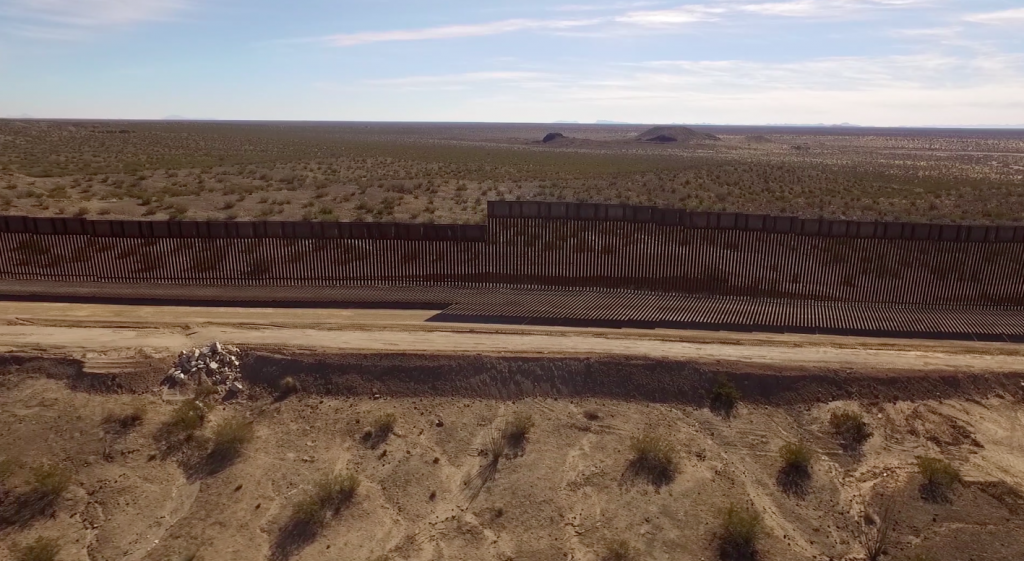|
Drone footage of new border wall in New Mexico shows that the Trump administration’s border militarization is already damaging ecosystems and wildlife. Trump waived 25 laws that protect clean air, clean water, public lands and endangered wildlife to speed construction of 20 miles of new walls.
The video, taken by the Center for Biological Diversity and available for media use, shows the 18-foot-tall bollard-style barrier constructed in the remote Chihuahuan Desert. The wall replaced waist-high vehicle barriers that allowed wildlife to move back and forth across the border.
“Trump’s destructive wall is already being built, as this video shows,” said Laiken Jordahl, the Center’s borderlands campaigner, who helped shoot the video. “He just ripped a 20-mile scar through spectacular New Mexico landscape while Washington politicians fight over the difference between a ‘fence’ and a ‘wall.’ It’s a ridiculous argument that’s completely lost on wildlife harmed by these barriers. Congress shouldn’t give Trump another cent for these devastating projects.”

Click here to download the video.
The remote wilderness of sagebrush and soaptree yucca is not a crossing point for drug smugglers or migrants. But it is home to rare animals, including the Mexican gray wolf and Aplomado falcon, as well as kit foxes, bighorn sheep and ringtail cats.
The new bollard-style wall blocks the natural migration of wildlife. The $73 million wall is also likely to cause flooding and erosion.
In March the Center sued to challenge the New Mexico waivers. The Center also is challenging similar waivers used to rush wall construction in Texas and California.
This month the Trump administration is expected to break ground on more border-wall construction in Texas’ Rio Grande Valley, using $1.6 billion approved by Congress last year. The Texas walls would cut through the Lower Rio Grande Valley National Wildlife Refuge, National Butterfly Center, Bentsen-Rio Grande State Park and the grounds of the historic La Lomita Chapel, as well as family farms and other private property.
Beyond jeopardizing wildlife, endangered species and public lands, the U.S.-Mexico border wall is part of a larger strategy of ongoing border militarization that damages human rights, civil liberties, native lands, local businesses and international relations. The border wall impedes the natural migrations of people and wildlife that are essential to healthy diversity.
*
Note to readers: please click the share buttons below. Forward this article to your email lists. Crosspost on your blog site, internet forums. etc.
Featured image: Homeland Security Secretary Kirstjen Nielsen speaks during a visit to President Trump’s border wall in the El Centro Sector in Calexico, California. © Reuters / Earnie Grafton
|